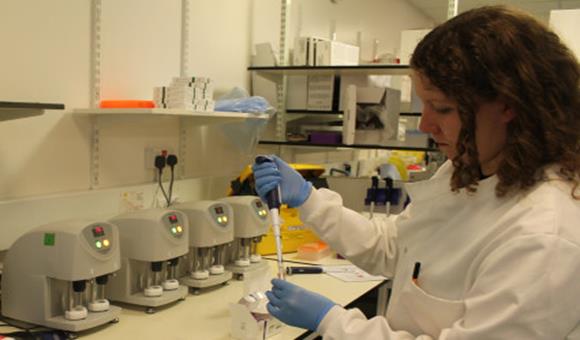TEG is a real time analyser of whole blood that can quickly provide patient results to allow for faster treatments and decision-making.
The concept of individualised goal-directed therapy allows clinicians to treat each patient more appropriately. From testing whole blood, TEG measures the harmonic motion properties in a functional way.
TEG is a diagnostic tool that provides clinicians with the most complete information to determine the right blood product or drug, at the right time, to manage a patient’s risk for haemorrhage or thrombosis.

Clinical relevance
TEG has been shown to help differentiate between surgical bleeding and a pathological coagulopathy; this information can support the need for further exploration of surgical sites to ensure surgical haemostasis.
TEG can express function and pinpoint dysfunction in the haemostatic process. By doing so, it can reference the types and amounts of blood products to stop bleeding.
It can also be used to monitor anti-platelet drugs and anticoagulants to help reduce thromboembolic complications in the form of a platelet mapping assay, which determines the strength of the clot and the reduction in clot strength relative to antiplatelet therapy.
Reference range
Current laboratory (adult, M/F) normal ranges are as follows:
| Test | RTime | MA | LY30 |
|---|---|---|---|
| CK | 4.6 – 9.1 | 52 – 69 | 0.0 – 2.6 |
| CRT | N/A | 52 – 70 | 0.0 – 2.2 |
| CKH | 4.3 – 8.3 | 52 – 69 | N/A |
| CFF | N/A | 15 – 32 | N/A |
PLEASE NOTE: Reference ranges apply to patients over 16 years of age only.
Minimum volume
The volume of blood in coagulation samples must lie within the volume range as indicated by the size of the black fill arrow present on tubes. Volumes above or below the arrow will result in sample rejection to ensure validity of results.
Turnaround time
Therapy monitoring: 1 hour – results will be observed within a few minutes of test initiation.
Age of sample
Samples will be rejected if received more than 2 hours post venepuncture.
Requesting requirements
- 1 blue top (sodium citrate) sample (TEG analysis)
- 1 green top (lithium heparin) sample (Platelet mapping)
- All coagulation tubes must be adequately filled (see above).
- All coagulation tubes must be mixed several times by gentle inversion immediately after venepuncture. Mixing the sample with the anticoagulant stops the sample clotting within the tube.
Location of TEG packs
All TEG requests must now be ordered through WebICE or via request forms.
There are two options on WebICE for TEG requests:
- Routine TEG profile (this incorporates a CK, CKH, CFF and CRT and is used for major trauma and routine monitoring of patients)
- Platelet Mapping (this determines the MA (clot strength) and the level of inhibition caused by antiplatelet therapy).
Theatres without access to WebICE (cardiothoracics) may use a manual requesting form for TEG requests (see below for TEG pack locations).
Ensure the provided TEG request form is filled in appropriately with date and time, requesting clinician and telephone extension. TEG request forms contain four categories. Fill in the appropriate group whether you are using the TEG in the major haemorrhage protocol, a general TEG screen, for cardiac surgery or as a pre assessment screen. Please ensure all drugs and products given are indicated.
Limitations
- It is not possible to provide results on clotted or insufficient samples. These will be rejected with the appropriate comment.
- Sample tubes that have expired cannot be accepted.
Viewing TEG traces
TEG traces can be viewed via TEG Management. This can be accessed on any PC within the trust by visiting the Systems page of the intranet or clicking the following link:
Analysing laboratory
Coagulation Lab, James Cook University Hospital, Marton Road, TS4 3BW